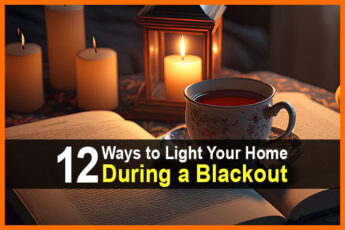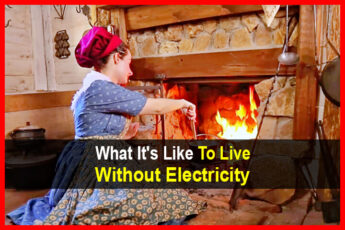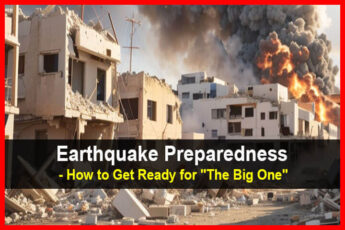Estimated reading time: 10 minutes
Most homes are currently powered by the various networks of electric grids that run throughout our cities. Most people probably don’t realize how our reliance on these systems will become a handicap when the grid eventually fails. If you think about it, most cities are one natural disaster away from being electrically crippled.
Luckily, there are some effective means to generate power that you can learn about that don’t rely on the electricity grid. Using a combination of methods is best so that you can create an uninterrupted power supply. To get started you want to identify any knowledge gaps to understand the mechanics behind generating energy.
Want to save this post for later? Click Here to Pin It On Pinterest!
Renewable Energy Vs. Non-Renewable
Renewable energy can be created indefinitely through the perpetual existence of the resource used. Good examples of unlimited resources would be the sun, water, and wind. Non-renewable energy is created through something that doesn’t occur in nature; it is refined, like gasoline or diesel fuel.
Ideally, it’s best to have your energy generation come from a renewable source. The reality of it is if you run out of fuel then you run out of power. This is the primary weakness of a non-renewable source of energy.
What Should You Know About Generating Your Power?
There are several components to any independent power source that you’ll need to have intimate knowledge of. You’ll need the device that generates the power, a storage device for the power used, and some equipment to refine the raw power into usable current.
Learn How To Be Your Own Electrician

Odds are you won’t be able to call your local contractor to help you out with your power problems. This means you’re going to have to learn about wiring, being safe with electricity, and various other obstacles that come with maintaining your power setup.
There are lots of terminology and math equations involved in determining your power needs and capacity, but it can be quickly learned with some hands-on experience.
Ensure You Have The Right Tools
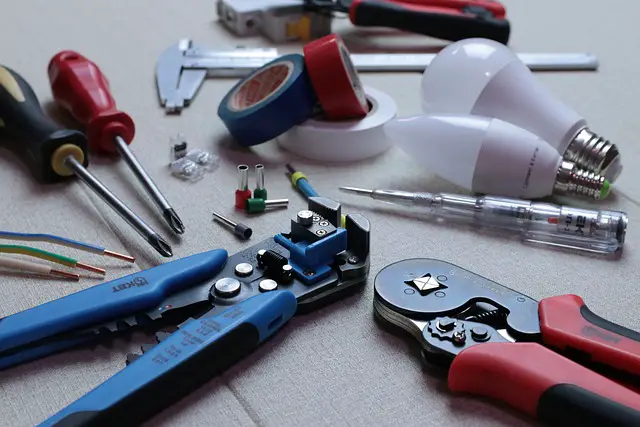
Having a basic kit for your electrical needs will make your job of creating energy much easier. Your kit should have items that can help you strip wires, measure distances, and read voltage. Here is a list of items you’ll want around for any off-grid power generation.
- Wire strippers
- Regular pliers
- Needle nose pliers
- Side cutting pliers
- Multimeter (Voltage tester)
- Tape Measure
You can find a lot of these items around almost every garage and workshop. For more detailed information on a reliable electrical kit, check out this article here.
7 Ways You Can Generate Power Post Collapse
Each of these methods will need a plan for getting the power stored. The best way would be to use batteries. These can be lithium-ion or Advanced Glass Mat batteries which are essentially sealed lead acid batteries. You’ll also need either an inverter or a fuse box in your home to help transform the raw electricity into usable energy.
This list is a combination of renewable and non-renewable sources of energy in case you need some short-term solutions. There will also be a link to some useful information about each method for further research.
1. Use Solar Panels

Solar, or photovoltaic (PV) energy harnesses the power of the sun to provide electricity. The power is generated when the solar radiation is converted into electric voltage through a reaction between metal and a semiconductor.
You can purchase solar panels locally and they have a robust life of about 25 years. The solar setup requires another crucial component for it to work correctly. You’ll need a charge controller which helps control how much energy is going to your batteries. If you don’t have a charge controller there is a chance you will overcharge the battery.
Solar panels are widely used all over the world and will provide sustainable power for your home. The main problem with this setup is that you’re going to need the sun to produce any energy. This becomes an issue in areas where there may not be a lot of suns.
The other problem is that you can’t use the sun at night, limiting your ability to generate power to half a day at most.
If you have any spare CDs and a spare picture frame you can create your solar panels. Check out this DIY video for instructions.
2. Hydroelectric Turbine

When people think about using water for generating electricity they will think of hydroelectric dams. While they are used today to generate large amounts of electricity, the average person won’t be able to build one.
However, using a small turbine, you can turn the power of a river into an unending source of electrical potential. You can find small hydroelectric turbines on the market today and the efficient ones can power an entire home.
The basic setup will require an intake pipe that leads to the turbine. As the water flows through the turbine it will pass into another pipe that will return the water to the river. As long as the pressure is consistent, the system should run smoothly.
Of course, don’t forget your battery system and inverter to complete the setup as you won’t be able to use the raw power as is.
The nice thing about rivers is that they are running 24/7 unless you have a severe drought and they dry up. You’ll want to ensure that there is a water depth of at least 1 meter for optimal clearance.
3. Wind Turbine

Regular wind turbines are those massive white ones that you generally see driving down country roads. These are designed to generate power and feed it back into the grid, helping out with any excessive electrical loads.
There are micro wind turbines available that can be pointed in the dominant wind direction for your area. They use the force of the wind to push the turbine which then generates the power. This power can then be directed into your battery system.
Using a wind turbine in conjunction with a solar setup is a good combination. You can maximize power input during the day and still have some energy being created at night and in bad weather.
For an in-depth look into micro wind turbines and if they’re right for you, check out this video.
4. Geothermal and Steam Power
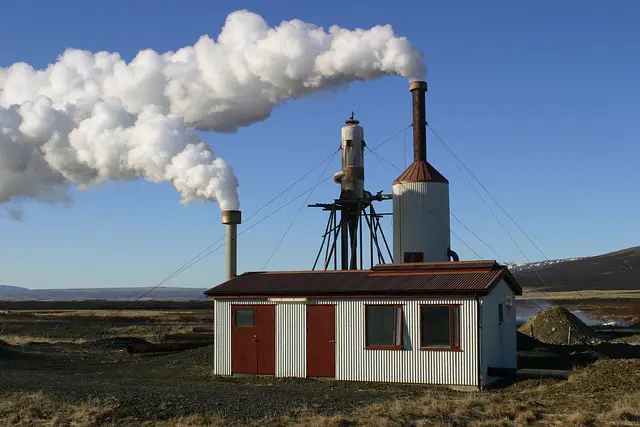
Geothermal energy is about utilizing the natural warmth of the planet. Places like Iceland that have numerous hot springs and volcanoes use steam vents to power their turbines. It is commonly used for heating and cooling your home and should be paired with an efficient solar setup if you want to stay off the grid.
Steam has been used to power machines for a long time. Steam from the boiling water will expand and pressurize the engine. The pistons will start to be pushed back and forth inside the cylinder. This is connected to a generator that is powered by rotary force from the steam.
Most geothermal installations can be expensive if you want them done by a professional. There needs to be a lot of excavation to put in the pipes needed to transport the water. Take a deeper dive into geothermal heating with this reference video that explains the different types of systems.
5. Biomass Power Generation
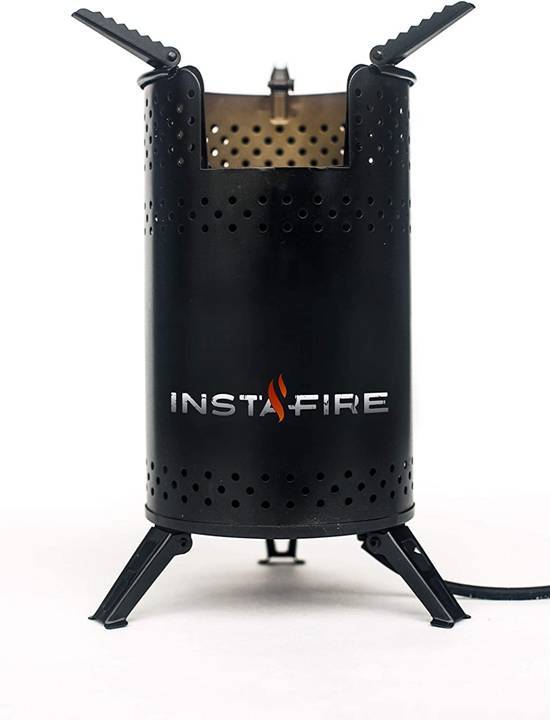
Creating power with biomass starts with burning raw materials such as wood, plants, and animal waste. As it’s burning, the material will release steam that is then pressurized and used to power a turbine. The turbine will create electricity which can then be used to charge some batteries.
The excess carbon from the process is released into the air. It takes a lot of fuel to keep the system working efficiently and as such, wood pellets are generally used since they are cheap and burn hot.
Check out this video to learn everything you need to know about using biomass as renewable energy.
6. Gas/Diesel Combustion Generators
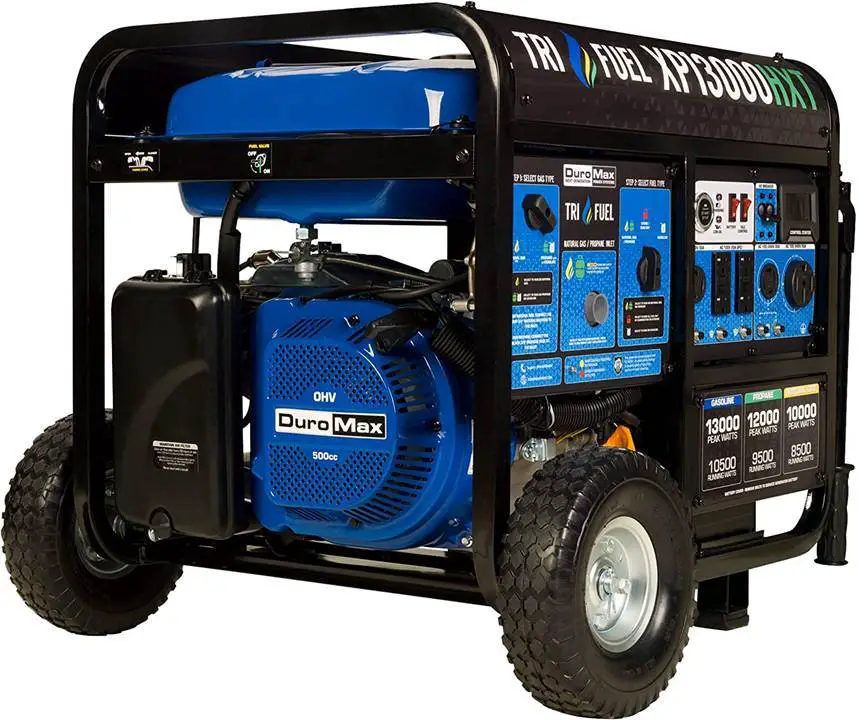
All of the different ways to generate power this far have been using renewable energy. While they are excellent choices for long-term power generation, they take time to put together. Using a gas or diesel generator is a great option to keep you powered until you run out of fuel.
It is generally a good idea to have a few jerry cans full of fuel at any given time. A couple of 5-gallon gas cans can power a generator for several days, depending on what you’re powering.
Having a fuel generator on hand is a good option for the inevitable repair and maintenance days you’ll have with other renewable options. For example, solar panels may need to be repaired which equals more downtime for power production. While you fix the problem you can substitute the power loss with a gas generator.
Not sure if you should use a gas or a diesel generator? Check out this comparison to help you decide.
7. Fire
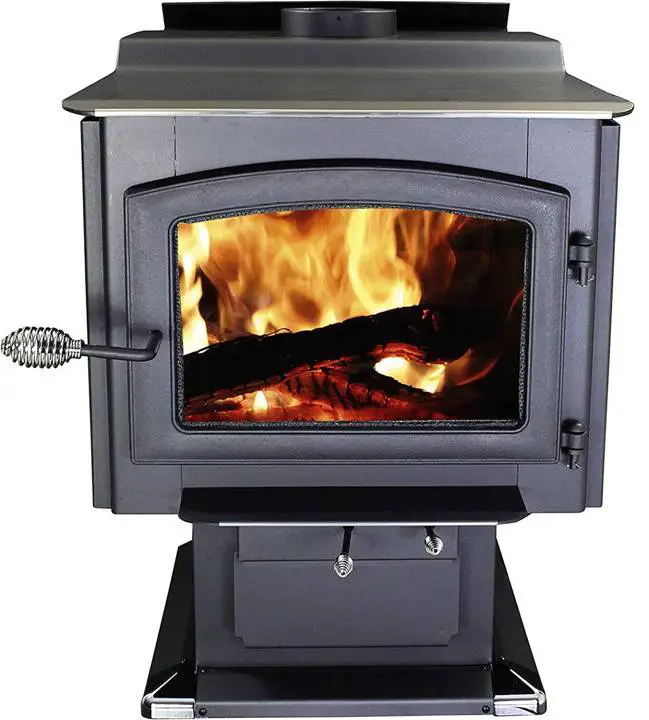
Fire produces energy that can keep you warm and help you cook food. This eliminates the need to have electricity on hand. Additionally, a metal wood stove can heat a large home as long as it is properly installed. You can even use it for cooking and baking food.
Compared to stoves that use fuel like propane and butane, wood heat is dry which helps keep you warmer. Burning the right wood is important as different wood output different heat amounts, measured in British Thermal Units (BTU).
Here is a closer look at how wood stoves work to generate a lot of heat energy for your home.
Final Thoughts
When the grid goes down there will be no access to the main power plants in your area. Taking the steps to ensure you are generating sustainable power will minimize the impact of being shut off from city hydro. Remember to consider using two or more ways in case one fails or is less efficient than you thought.
Like this post? Don't Forget to Pin It On Pinterest!






